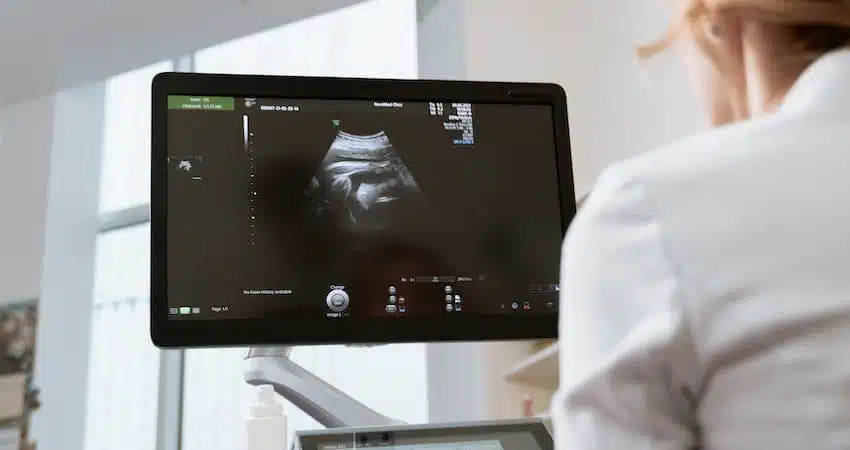Ready to meet your little one? As an expectant mother, you’re likely eager to give birth as smoothly and comfortably as possible. While every labor journey follows its own path, knowledge truly is power. Understanding optimal fetal position and techniques for guiding babies into ideal alignment empowers moms to navigate the birthing process intuitively.
Fetal position during pregnancy and labor is vital for safe passage through the birth canal. This guide explores ideal fetal positioning along with how moms-to-be can utilize movements to encourage optimal baby configurations for each labor stage. With the right know-how steering baby towards harmonious pelvic alignment, you’re primed for a smoother delivery.
So let’s dive in! When does ideal fetal positioning come into play, and how can you adopt comfortable positions maximizing chances for safe, successful labor and delivery? You’ve got this, mama!
Ideal Fetal Position for Labor and Birth: The Keys
Before covering specific maternal positions easing the baby’s journey, grasping some anatomical pointers enriches understanding. The aim through all labor stages is maneuvering the compactly folded fetal position into configurations with the smallest possible dimensions passing the pelvic inlet and outlet.
Ideally, as labor commences and the cervix begins effacing (thinning), the baby’s head tilts downward towards the pelvic inlet, preparing for descent. With legs curled inward and chin tucked towards chest, baby assumes a snug, rounded fetal position ideal for smoothly navigating curving birth paths. Facing the baby’s back directly towards mom’s spine also optimally aligns their widest head circumference with the broadest lateral dimensions of the pelvis. Getting all points lined up prevents the baby from becoming lodged in the canal.
Tailoring Maternal Positions by Labor Stage
As labor progresses through successive early, active and pushing phases, the optimal maternal and fetal positions evolve correspondingly. Early on during prolonged gradual cervical dilation, aim to open up the pelvic inlet through specific movements encouraging the baby to fully drop into the birth canal.
Once entering active labor when dilation accelerates rapidly with intensifying contractions, shift to positions aligning the baby’s head and spine ideally with the downward-angled canal. Understanding these evolving needs enables moms to flow intuitively with labor’s natural stages and sensations.
Opening the Pelvic Inlet in Early Labor
These popular maternal positions and movements help cradle baby in the optimal fetal position while widening the pelvic inlet to encourage full descent during early labor:
- Supported deep squats horizontally open inlet planes
- Upright sitting with knees spread wide utilizes gravity’s pull
- Swaying hips through dance-like motions shifts alignment
- Leaning forward onto a birth ball rotates the pelvis
- Hands-and-knees crawling shifts pelvic dimensions
- Side-lying releases allows the pelvis to fully relax
Optimal Fetal Positioning Descending the Canal
As the baby progresses deeper through the birth canal and active labor kicks into high gear, focus shifts to aligning fetal position optimally with the downward-angled pelvic outlet plane. Movement and positioning tailor for a smooth exit:
- Side-lying opening one side, with top knee forward & bottom knee back
- Wide-legged standing with feet angled slightly inward
- Supported squatting against a partner or sturdy prop like a squatty potty
- Hands-and-knees crawl with knees together and feet apart
- Resting on hands and knees, swaying hips to keep baby aligned
Rhythmically flowing between positions not only maximizes comfort through changing sensations and intensity spikes but also prevents stagnation that could disrupt fetal alignment. Tune into breathing, intuition and sensations to discover what movements feel instinctively constructive. A seasoned birth doula can also provide invaluable wisdom recommending optimal maternal positioning moment-by-moment.
Navigating Transverse or Breech Presentations
While extremely rare, should follow-up prenatal scans reveal the baby positioned transversely or in breech, promptly consult an obstetrician or midwife. Similarly, even when the baby initially presents head-down, if any concerning signs develop during labor such as stalled progress or indications of distress, do not hesitate to request immediate medical evaluation determining if interventions like emergency cesarean delivery are advisable.
While the course of labor seldom perfectly matches ideals, knowledge is mother’s greatest ally. Confidently engage positioning and movements as your intuition guides, inviting baby’s descent towards your arms through the birth canal. With a toolkit of techniques and a supportive birth team standing by, moms gain invaluable advantage discovering maternal positioning helping babies assume and maintain optimal fetal position for smooth labor.
Maximizing Optimal Fetal Positioning Success
Beyond just the core techniques themselves, fostering ideal fetal positioning requires additional measures maximizing likelihood of success.
Embrace Prenatal Education Early
Knowledge is power. Expecting mamas armed with deep insight into fetal positioning, labor stages and constructive movements enter birth feeling empowered and prepared. Attend childbirth classes, research widely, and seek mentorship from doulas or experienced mothers to build confidence in managing labor.
Get Support and Stay Grounded
Labor is an incredible test of endurance. Having a loving birth partner to stay grounded through contractions while recommending optimal positions provides invaluable aid. Doulas also bring expertise guiding moms smoothly through each stage. Stay hydrated, fed and comfort-focused, resting between contractions.
Listen to Your Body's Intuition
You know your body and baby better than anyone. Should any position, movement or scenario ever feel viscerally “off” or unproductive, honor your intuition. Discuss concerns with your birth team and pivot to new approaches. Constructive maternal vocalizations also promote oxytocin, relaxation and progress.
With open communication, preparation and a willingness to adapt fluidly as needed, moms profoundly further chances for ideal fetal positioning and a smooth, empowering birthing experience. Trust yourself as you discover the unique dance of optimal positioning.



